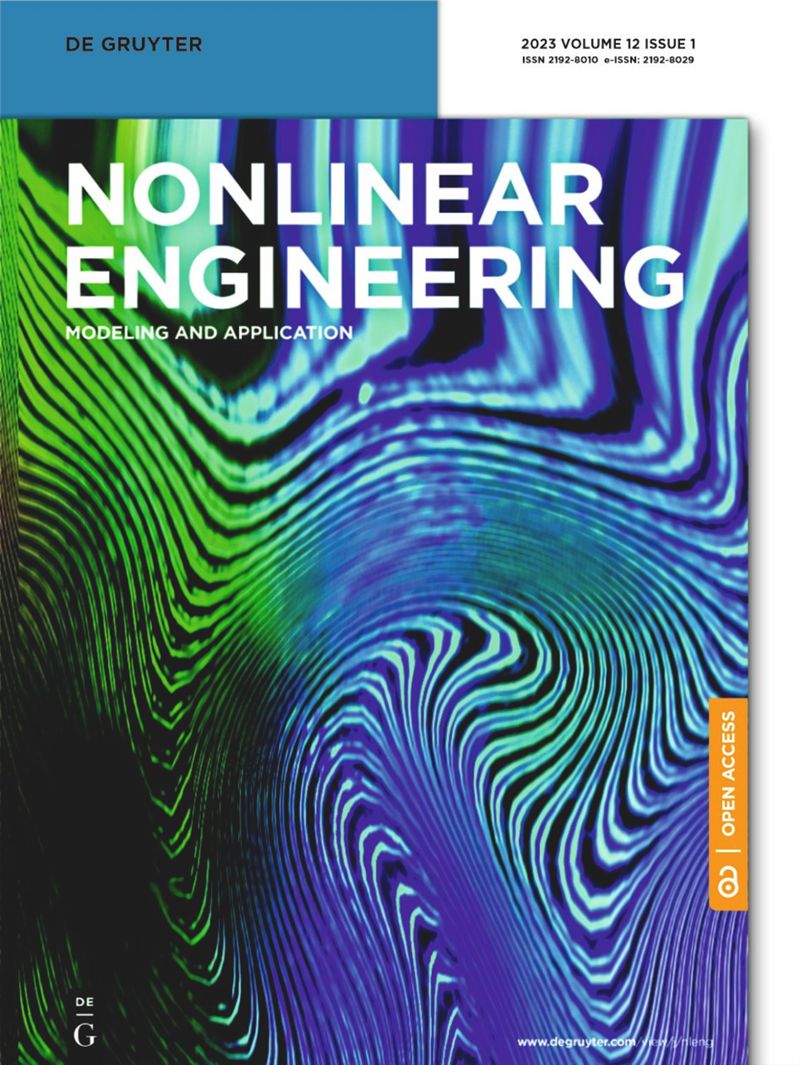地震作用下桩位及桩基动力响应的非线性数值模拟
IF 2.4
Q2 ENGINEERING, MECHANICAL
引用次数: 0
摘要
摘要为研究桩土非线性连接对桩基动力响应特性的影响,本文提出结合离心振动台试验和OPENSEES开源有限元程序,研究桥梁桩基对边坡的动力响应。本文介绍了基于围压的压力相关多屈服面模型。通过离心模型试验相似比的反计算,可以建立坡段内群桩的OPENSEES二维非线性有限元模型。离心机振动台试验是在模型箱底部水平输入预设的地震波。地震波的形式为地震作用下坡段群桩二维有限元模型的El Centro波验证。通过对比5种不同峰值加速度地震波荷载条件下桩身动力响应(残余水平位移和最终弯矩)的试验值和计算值,验证了模型的可靠性。边坡桩基动力响应试验中,在基岩面以下预埋段,各桩体残余水平位移均为零。受承台梁和系梁的约束,这两个位置的群桩自由截面位移基本相同。综合分析,P1桩和P2桩的位移基本相同。P1、P2桩的最终弯矩计算值与试验值变化趋势一致,试验值略大于计算值。P1桩在各荷载工况下最大终弯矩的相对误差分别为7.4、7.8、12.6、3.9、9.6%,P2桩的相对误差分别为4.6、3.6、12.5、13.6、11.5%。分析相对误差是由于桩体计算中使用的弹性单元与试验中模拟桩体材料的力学行为不同而引起的。根据已有的离心试验结果,边坡场地动力响应可以看出,地震作用下边坡场地的坡肩变形最为明显。软、硬岩层和土层的倾斜界面会加剧边坡上覆盖层的动力响应,削弱其地震耗能能力。本文章由计算机程序翻译,如有差异,请以英文原文为准。
Nonlinear numerical simulation of dynamic response of pile site and pile foundation under earthquake
Abstract To study the influence of the nonlinear connection of pile and soil on the dynamic response characteristics of the pile foundation, this article proposes to study the dynamic response of the bridge pile foundation to the slope by combining the centrifugal shaking table test and OPENSEES open source finite element program. This article introduces the pressure-dependent multiyield surface model based on confining pressure. Through the inverse calculation of the similarity ratio of the centrifuge model test, the OPENSEES two-dimensional nonlinear finite element model of the pile group in the slope section can be established. The centrifuge shaking table test is to input the preset seismic wave horizontally at the bottom of the model box. The form of seismic wave is El Centro wave verification of two-dimensional finite element model of the pile group in slope section under earthquake. The reliability of the model is verified by comparing the test and calculated values of dynamic response (residual horizontal displacement and final bending moment) of the pile body under five different peak acceleration seismic wave loading conditions. In the dynamic response experiment of slope pile foundation, in the embedded part below the bedrock surface, the residual horizontal displacement of each pile body is zero. Constrained by the cap beam and tie beam, the displacement of the free section of the pile group at these two positions is basically the same. Through comprehensive analysis, the displacement of P1 and P2 piles is basically the same. The calculated value of the final bending moment of P1 and P2 piles shows the same change trend as the test value, and the test value is slightly larger than the calculated value. The relative errors of the maximum final bending moment of P1 pile under each loading condition are 7.4, 7.8, 12.6, 3.9, and 9.6%, respectively, and the relative errors of P2 pile are 4.6, 3.6, 12.5, 13.6, and 11.5%, respectively. The analysis relative error is caused by the elastic element used in the calculation of the pile body, which is different from the mechanical behavior of the simulated pile body material in the test. Dynamic response of slope site according to the existing centrifuge test results can be seen that the deformation at the slope shoulder of slope site is the most obvious under the earthquake. The inclined interface of soft and hard rock and soil layer will aggravate the dynamic response of the overburden layer on the slope, weakening its ability of seismic energy consumption.
求助全文
通过发布文献求助,成功后即可免费获取论文全文。
去求助
来源期刊
CiteScore
6.20
自引率
3.60%
发文量
49
审稿时长
44 weeks
期刊介绍:
The Journal of Nonlinear Engineering aims to be a platform for sharing original research results in theoretical, experimental, practical, and applied nonlinear phenomena within engineering. It serves as a forum to exchange ideas and applications of nonlinear problems across various engineering disciplines. Articles are considered for publication if they explore nonlinearities in engineering systems, offering realistic mathematical modeling, utilizing nonlinearity for new designs, stabilizing systems, understanding system behavior through nonlinearity, optimizing systems based on nonlinear interactions, and developing algorithms to harness and leverage nonlinear elements.

 求助内容:
求助内容: 应助结果提醒方式:
应助结果提醒方式:


